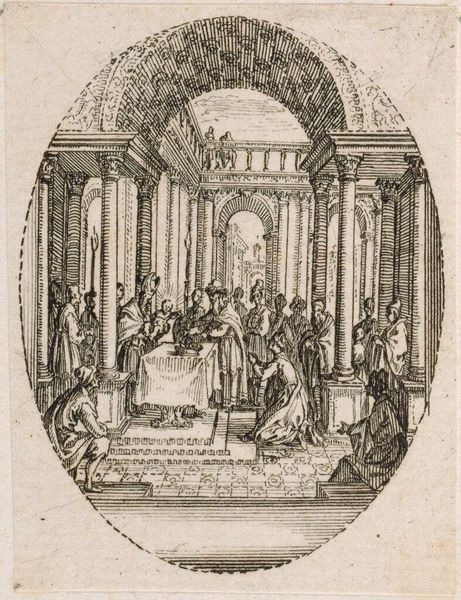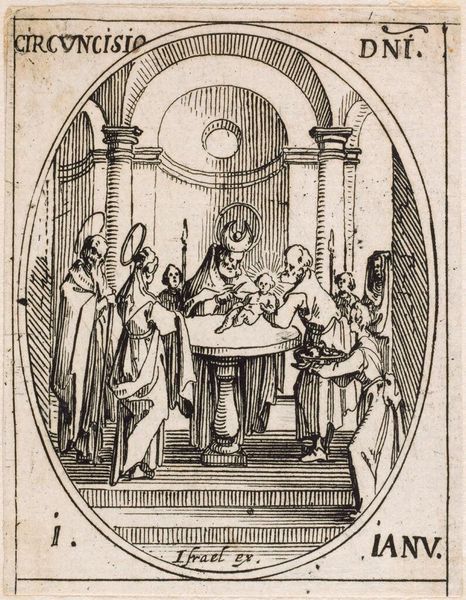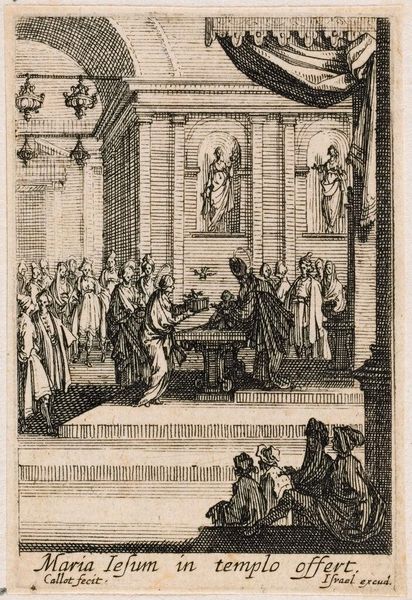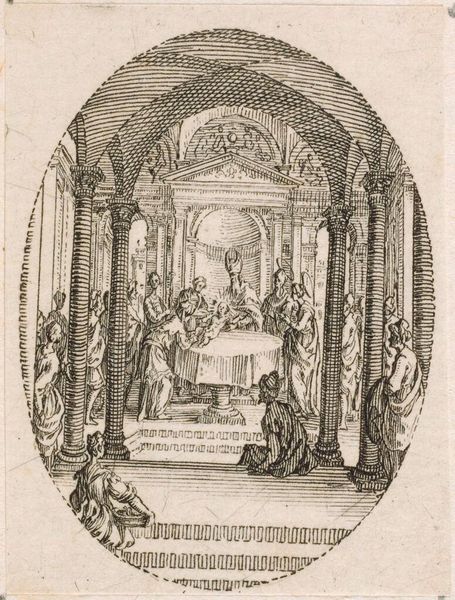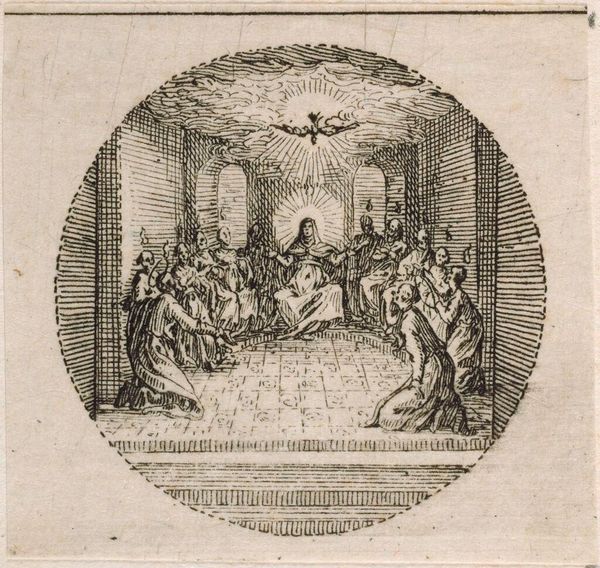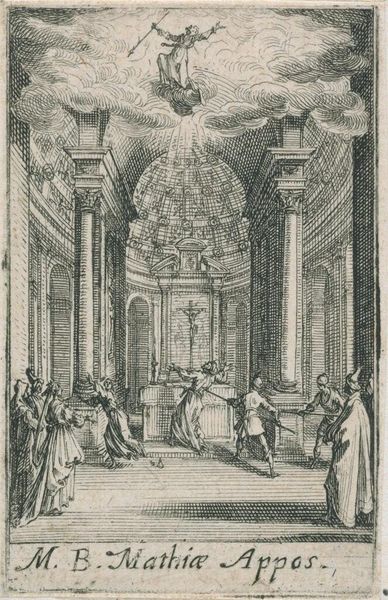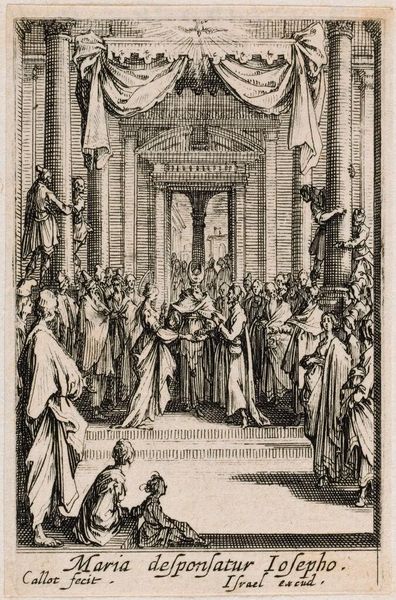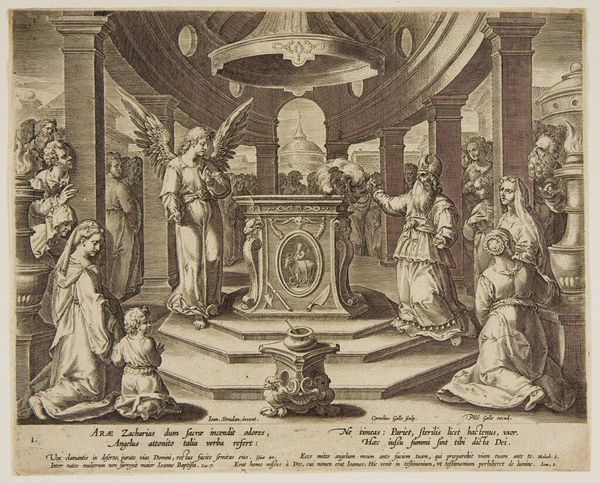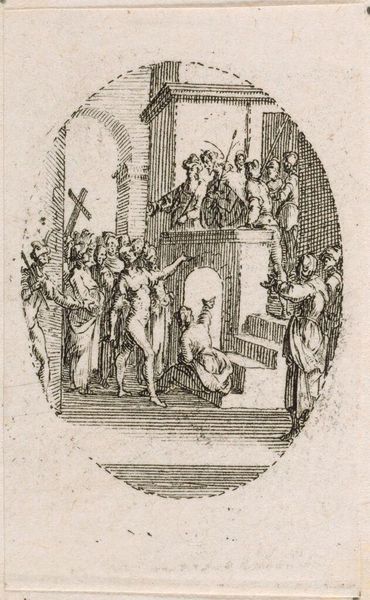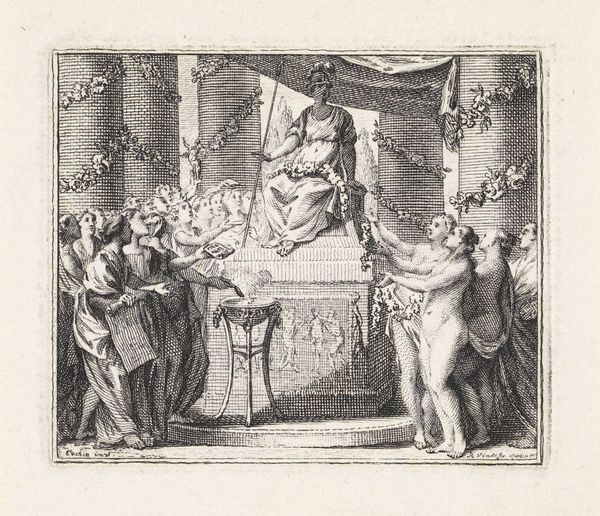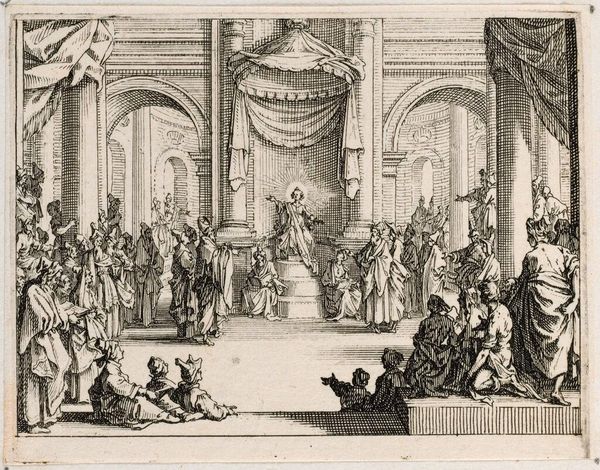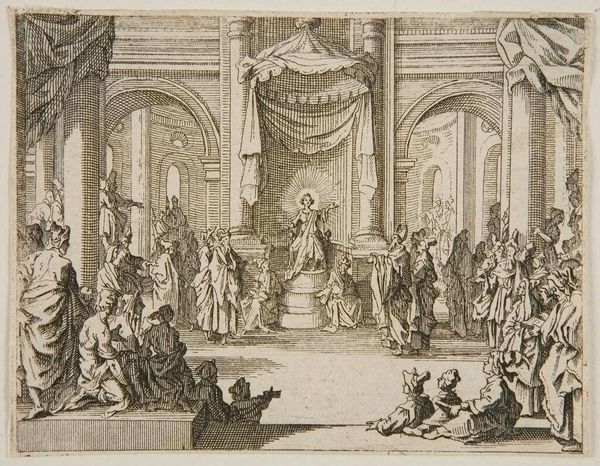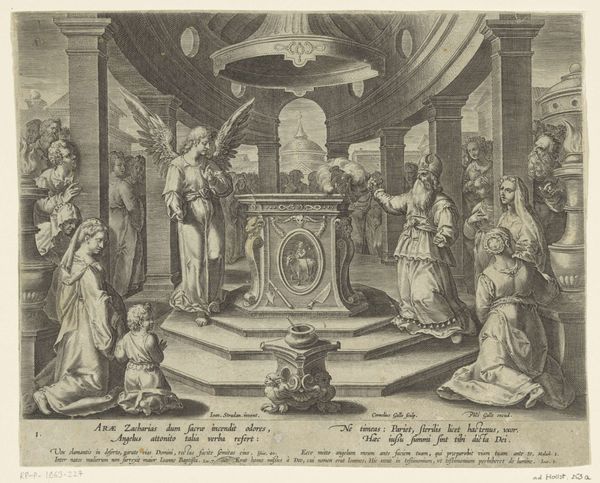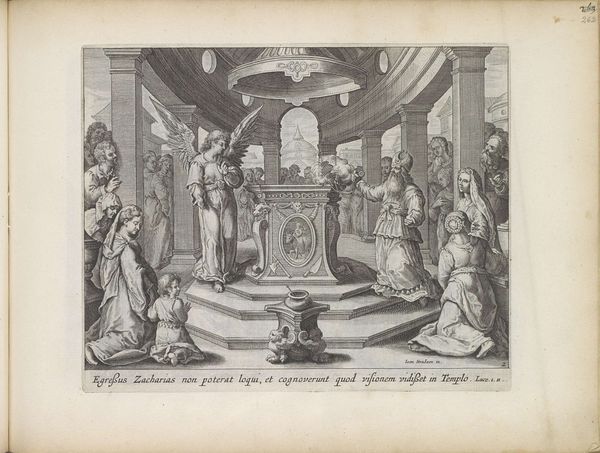
Dimensions: 5 x 3.6 cm (1 15/16 x 1 7/16 in.)
Copyright: CC0 1.0
Curator: Callot’s "Jesus Among the Doctors" presents a young Jesus debating learned men. The print, currently residing at Harvard Art Museums, is incredibly small, only about 5 by 3.6 centimeters. Editor: The architectural space is striking, a circular structure within an oval frame. It's so meticulously detailed, especially considering its size. I wonder, what materials were crucial for this intricate work? Curator: Callot was a master etcher. The fine lines were achieved through the controlled use of acid on a metal plate, a process demanding highly skilled labor. The resulting prints would have been relatively accessible, circulating religious imagery widely. Editor: So, its availability shaped religious perception? How did institutional religion view this widespread production and potential interpretation of scripture? Curator: The Church promoted such imagery. Callot’s etchings served as visual aids, reinforcing religious narratives within a particular sociopolitical framework. Editor: Thinking about the act of making, the repetitive motion, the acid altering the metal, it highlights the often overlooked labor and materiality that underpin even the most sacred images. Curator: It really illuminates the intersection between religious doctrine and the material means of propagating it. Editor: Seeing it this way, it’s less about divine inspiration and more about the human effort to shape belief.
Comments
No comments
Be the first to comment and join the conversation on the ultimate creative platform.
